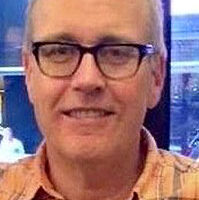
NEW YORK (AP)—A racist ideology seeping from the internet’s fringes into the mainstream with the help of the right-wing media and Republican politicians is being investigated as a motivating factor in the supermarket shooting that killed 10 people in Buffalo, N.Y. Most of the victims were Black.
Ideas from “The Great Replacement Theory” filled a racist screed supposedly posted online by the white 18-year-old man accused of targeting Black people in Saturday’s rampage. Authorities are still working to confirm its authenticity.
Certainly, there was no mistaking the racist intent of the shooter.
What is the “Great Replacement Theory”?
Simply put, it says there’s a conspiracy afoot to diminish the influence of white people.
Believers say this goal is being achieved both through immigration of non-white people into societies that have largely been dominated by white people, as well as through simple demographics, with white people having lower birth rates than others.
The theory’s more racist adherents claim Jews are behind the so-called replacement conspiracy. When white supremacists marched in Charlottesville, Va., in 2017, their chants included “You will not replace us” and “Jews will not replace us.”
Another explanation being pushed in the mainstream in the U.S. suggests Democrats are encouraging immigration from Latin America so more like-minded potential voters replace what are referred to as “traditional” Americans.
What are its roots?
The so-called “Great Replacement Theory” has deep roots in the history of white supremacy. In the U.S., the efforts to intimidate and discourage Black people from voting—from replacing white voters at the polls—date to the post-Civil War era, for instance.
In the modern era, most experts point to two influential books. The Turner Diaries, a 1978 novel written by William Luther Pierce under the pseudonym Andrew Macdonald, is about a violent revolution in the United States with a race war that leads to the extermination of non-whites.
The FBI called it a “bible of the racist right,” said Kurt Braddock, an American University professor and a researcher at the Polarization and Extremism Research & Innovation Lab.
A 2012 book by Frenchman Renaud Camus, about Europe being invaded by Black and brown immigrants from Africa, was called Le Grand Remplacement and a name was born.
Who are its adherents?
To some of the more extreme believers, certain white supremacist mass killers—in Norway in 2011, two New Zealand mosques in 2019, a Pittsburgh synagogue in 2018, and a Black church in South Carolina—are considered saints.
Those “accelerationist white supremacists” believe small societal changes won’t achieve much, so the only option is tearing down society, he said.
The Buffalo shooter’s alleged diatribe and some of his apparent methods indicate he closely studied the New Zealand shooter, particularly the effort to live stream his rampage online. He reportedly inscribed the number 14 on his gun, which Pitcavage said is shorthand for a 14-word white supremacist slogan: “We must secure the existence of our people and a future for white children.”
A “manifesto” by the New Zealand shooter was widely spread online. If the message from the Buffalo shooter proves authentic, it seems designed to also spread his philosophy and methods to a large audience.
Is the theory making wider inroads?
While more extreme and blatant forms of racism are often publicly frowned upon by conservative political and media figures, many experts are concerned about the increasing mainstreaming of some views.
In a poll released last week, The Associated Press and the NORC Center for Public Affairs Research found that about 1 in 3 Americans believe an effort is underway to replace U.S.-born Americans with immigrants for electoral gain.
On a regular basis, many adherents to the more extreme versions of “The Great Replacement Theory” converse through encrypted apps online and tend to be careful. They know they’re being watched.
“They are very clever,” Braddock said. “They don’t make overt calls to arms.”
Who’s talking about replacement?
In particular, Tucker Carlson, Fox News’ most popular personality, has pushed false but more politically palatable views that are seen as sympathetic by some white people who are concerned about a loss of power.

“I know that the left and all the gatekeepers on Twitter become literally hysterical if you use the term ‘replacement,’ if you suggest the Democratic Party is trying to replace the current electorate, the voters now casting ballots, with new people, more obedient voters from the Third World,” he said on his show last year. “But they become hysterical because that’s what’s happening, actually, let’s just say it. That’s true.”
A study of five years’ worth of Carlson’s show by The New York Times found 400 instances where he talked about Democratic politicians and others seeking to force demographic change through immigration.
The attention paid by many Republican politicians to what they see as a “leaky” southern border along the United States has been interpreted, at least by some, as a nod to the concern of white people who worry about being “replaced.”
House Republican Conference Chair Elise Stefanik’s campaign committee was criticized last year for an advertisement that said “radical Democrats” were planning a “permanent election insurrection” by granting amnesty to undocumented immigrants who would create a permanent liberal majority in Washington.
The messages of Carlson and figures like Stefanik introduces the “Great Replacement Theory” to a conservative audience in an easier-to-swallow pill, experts say.












Comments